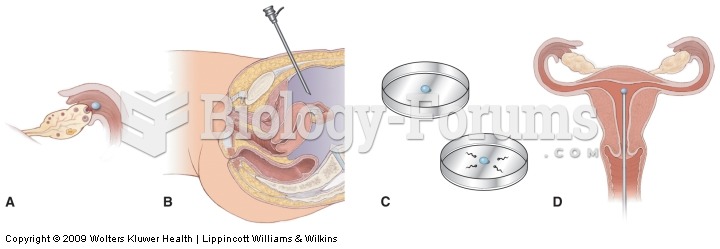Answer to Question 1
a) A small amount of mechanical digestion of food protein occurs as you chew your food.
b) The presence of food in your stomach causes some gastric cells to release a hormone called gastrin.
c) Gastrin then enters the blood where it triggers the release of hydrochloric acid (HCl), pepsinogen, mucus, and substances from other stomach cells that make up the gastric pits.
d) HCl disrupts the chemical bonds responsible for the protein's secondary, tertiary, and quaternary structure. (This denaturation process straightens out the complex protein structure so that the peptide bonds can be more completely exposed to the digestive enzymes present in the stomach and small intestine.)
e) HCl converts pepsinogen into its active form, called pepsin.
f) Pepsin hydrolyzes or breaks the peptide bonds between amino acids, resulting in shorter polypeptides and some free amino acids.
g) In the small intestine amino acids and smaller polypeptides coming from the stomach stimulate the release of the hormones secretin and cholecystokinin (CCK) from intestinal cells into the blood.
h) Secretin and CCK signal the pancreas to release bicarbonate into the lumen of the duodenum, neutralizing the acid from the stomach and inactivating pepsin. These hormones also cause the release of trypsinogen, chymotrypsinogen, proelastase, and procarboxypeptidase, all of which are proenzymes made in the pancreas.
i) These inactive proenzymes are converted in the small intestine to their active protease forms: trypsin, chymotrypsin, elastase, and carboxypeptidase.
j) Each of these enzymes then recognizes specific amino acids in polypeptide chains, breaking the peptide bonds holding them together and forming tripeptides, dipeptides, and free amino acids. Finally, the di- and tripeptides are further broken down by a multitude of enzymes produced in the brush border enterocytes.
Answer to Question 2
a







